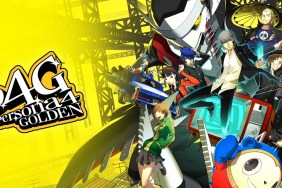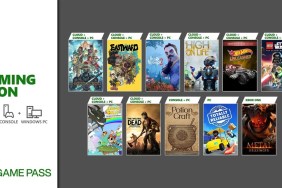If it only had a brain…
Xseed claims that their latest entry for the Nintendo DS, The Wizard of Oz: Beyond the Yellow Brick Road (TWOBYBR) is “perfect for players of any skill level”. If this is meant to be an introduction to the role-playing game genre, then it is an unfortunate miss because the game manages to take all the fun out of RPGs. Unlike that time when Dorothy’s house landed smack dab on top of that Munchkin-oppressing, sparkly shoe-wearing Wicked Witch of the East, TWOBYBR completely misses its mark.
[image1]The story is familiar. Your heroine (who you don’t have to name Dorothy) is swept away in the eye of a tornado from her idyllic life to a place of confusion and disorientation. With her trusty pup at her side (who you don’t have to name Toto), our hero soon meets a nebulous cloud that magically condenses into the Great Wizard of Oz. He gives the girl some information about the place she has landed, a handful of basic tips on how to move around and how to interact with objects, then promptly sends her and the dog on their way. Once she gets her sea yellow-brick-road legs, the monsters arrive, monsters she has to fight. And because this is an RPG we’re talking about, by ‘she’, I mean ‘you’.
After wandering through no less than five slabs of the exact same yellow brick road (monotonously from "Yellow Brick Road: A" all the way through "Yellow Brick Road: G"), you gain enough points and meet all your comrades – The Straw Man, the Lion, and The Tin Man – at which point you are given access to the Great Oz himself. He then gives you your mission: to defeat the Spring, Summer, and Autumn Witches that want to take over his seat of power.
Here’s where I must break from the review and say a few words about RPGs. This type of game is known for the long haul. Like a 900-page novel, you should expect to become attached to the characters, become invested in the goal, and never want it to end. Even avid RPG players will tell you, though, that the genre has both good and bad points. Some of the qualities that make them fun and worthy of play include a good story, the ability to customize and equip the parties you run with, a good way to navigate the world, and exciting battles that require strategy. Less desirable in the genre is the slow progression of the story (especially troubling if it’s due to too many random battles), the inability to converse with characters that you meet, gaining points in unspecified abilities that you therefore cannot use to your advantage, and too much repetition and downtime between new areas.
[image2]That being said, TWOBYBR does try to address some of those barriers of entry. The battles encountered along the way have some presets for the order of character attacks, and the best weapon or item to pull out each turn. This helps a new player get acquainted with the strategy of the game before having to jump in with both feet, and young players never have to step outside that strategy if they go with the suggested battle configurations. But by doing this, Xseed has taken some of the fun out of play. When you can just go through a battle by pressing OK on a few screens, you start to wonder what’s the point.
While there is a great variety of enemies to encounter, you encounter them too often. There are times when you can’t walk 10 feet without getting tangled up in a random battle. At least with the variety of enemies, the boredom of repetition takes a little longer to set in. But it will set in eventually, probably even before you meet with Oz and learn your mission. You can choose to flee battles with no negative repercussions other than the lost opportunity to gain experience points and possibly some coins, but it would have been better if enemy encounters were spaced out at greater intervals.
Sometimes moving around in RPGs is frustrating, but it’s done flawlessly here. There is a large trackball on the touchscreen that you swipe to walk and run. Where you move around is a different story. Just like the Yellow Brick Road, all the roads in the witches’ territories are basically analogs of the same road, and they’re named things like "Budding Highlands: A" through "Budding Highlands: C". It gets kind of confusing trying to remember where you are or why you’re there. A larger landscape or better naming conventions would have been helpful, because when you have to perform a task on road C that opens a gate on Road A, and the only way to get back to road A is at a single checkpoint on Road B, you can forget how to… where am I?
[image3]Similarly, the game is very conservative in giving out coins, to purchase new items like armor and weaponry. You’ll spend a lot of time with basic equipment while window-shopping for what you could have. Leveling up is fairly straightforward, and when you do, you gain access to more special abilities. Unfortunately, there is no table in the manual or screen on a help menu that explains what these abilities are. You can guess that ATK means attack, but a new RPG player may be left scratching his head when ACR or AGL points are amassed, let alone what they mean. How do you know what they do when they are not explained?
For parents looking to buy this game for children, you will be pleased that it never gets graphic in its violence, though for a DS game, graphics in general are impressive. It is very easy to revive a character who has fallen, and if your child is not concerned with reaching an assigned goal, TWOBYBR still offers hours of pleasant gameplay. But if your child wants to get to the end, to accomplish something, this may not be the best choice.
The Wizard of Oz: Beyond The Yellow Brick Road is a watered-down RPG with a few flaws that take some of the fun out of it. My first inclination was to compare the dilemmas in this game to those of the Scarecrow: No brain. But this game has maybe too much brain. It’s very logical and Xseed definitely put a lot of thought into making it very playable. The problem with TWOBYBR, though, is more like the Tin Man’s: No heart.
-
Moving characters is easy with trackball
-
Preset battle configurations for new players
-
Reviving fallen characters is almost automatic
-
Confusing navigation, similar road names
-
Miserly on coins
-
Help menu is lacking
-
Enemy encounters are too frequent
-
Repetitive play and slow story











